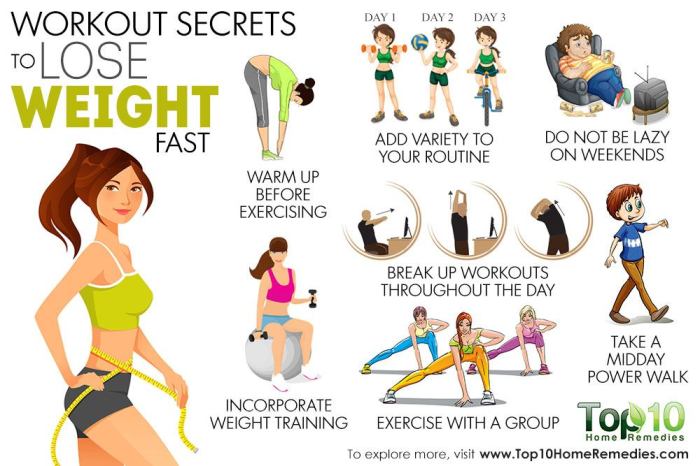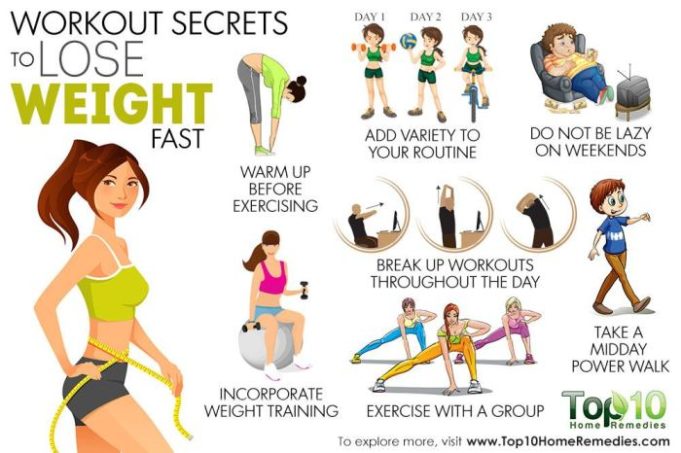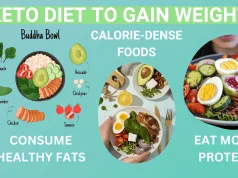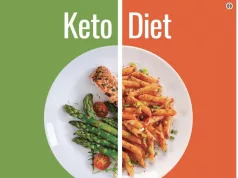Can you lose weight with just exercise sets the stage for this exploration, delving into the intricate relationship between physical activity and weight management. While exercise plays a crucial role in overall health and well-being, the answer to this question is nuanced and requires a deeper understanding of the complexities of weight loss.
This article examines the role of exercise in burning calories, boosting metabolism, and contributing to a calorie deficit. It explores the effectiveness of different exercise types, the importance of a balanced diet, and the factors that influence weight loss outcomes. Ultimately, we aim to provide a comprehensive understanding of how exercise can be incorporated into a holistic weight management strategy.
The Role of Exercise in Weight Loss
Exercise plays a crucial role in weight loss by increasing calorie expenditure and impacting metabolism, ultimately contributing to fat burning. It’s not a magic bullet, but it’s a vital component of a healthy weight management strategy.
The Relationship Between Exercise and Calorie Expenditure
Exercise directly impacts calorie expenditure, which is the number of calories your body burns throughout the day. When you exercise, your muscles work harder, requiring more energy. This energy is derived from the calories you consume. The more intense and longer your workout, the more calories you burn.
The amount of calories burned during exercise depends on factors such as the type of activity, duration, intensity, and your individual metabolism.
The Impact of Exercise on Metabolism and Fat Burning
Exercise doesn’t just burn calories during the workout; it also has a positive impact on your metabolism, which is the process your body uses to convert food into energy. Regular exercise can boost your resting metabolic rate (RMR), meaning you burn more calories even when at rest. This is because exercise builds muscle mass, and muscle tissue burns more calories than fat tissue.
Exercise also promotes fat burning by increasing the release of hormones like adrenaline and growth hormone, which help mobilize fat stores for energy.
Comparison of Different Types of Exercise for Weight Loss
Different types of exercise have varying levels of effectiveness for weight loss. Here’s a comparison of cardio and strength training:
Cardiovascular Exercise
Cardiovascular exercise, also known as aerobic exercise, is excellent for burning calories and improving cardiovascular health. It involves activities that elevate your heart rate and breathing for a sustained period. Examples include:
- Running
- Swimming
- Cycling
- Dancing
Strength Training
Strength training focuses on building muscle mass. While it may not burn as many calories during the workout as cardio, it helps boost your metabolism and increase your calorie expenditure at rest. Examples include:
- Weightlifting
- Bodyweight exercises
- Resistance band training
For optimal weight loss, a combination of cardio and strength training is recommended.
Calorie Deficit
To understand how exercise contributes to weight loss, it’s essential to grasp the concept of a calorie deficit. A calorie deficit is the state where you burn more calories than you consume. This principle is the foundation of weight loss, regardless of whether the calorie expenditure comes from exercise, diet, or a combination of both.
Creating a Calorie Deficit
A calorie deficit can be achieved through various methods, primarily through diet and exercise.
Diet
- Reducing portion sizes: This simple strategy can significantly decrease your overall calorie intake. For instance, instead of having a large plate of pasta, opt for a smaller portion and pair it with a side salad.
- Choosing nutrient-dense foods: Prioritize foods rich in nutrients but low in calories, such as fruits, vegetables, and lean proteins. These foods provide satiety while minimizing your calorie intake.
- Limiting processed foods: Processed foods are often high in calories, unhealthy fats, and added sugar. Reducing their consumption can significantly impact your calorie intake.
Exercise
- Cardiovascular exercise: Activities like running, swimming, cycling, and dancing burn a considerable number of calories. Aim for at least 150 minutes of moderate-intensity cardio or 75 minutes of vigorous-intensity cardio per week.
- Strength training: Building muscle mass increases your resting metabolic rate, meaning you burn more calories even at rest. Aim for at least two strength training sessions per week, targeting all major muscle groups.
- Increasing daily activity: Incorporating more movement into your daily routine can significantly increase your calorie expenditure. Take the stairs instead of the elevator, walk or cycle to work or errands, and engage in activities you enjoy, like gardening or dancing.
Tracking Calorie Intake and Expenditure
Tracking your calorie intake and expenditure is crucial for maintaining a calorie deficit.
Calorie Tracking Apps
Numerous calorie tracking apps are available, such as MyFitnessPal, Lose It!, and Fitbit. These apps allow you to log your food intake and exercise, providing an estimated calorie balance.
Food Labels
Pay close attention to food labels, which provide information on calorie content and other nutritional values. This information helps you make informed choices about your food intake.
Fitness Trackers
Fitness trackers, such as Fitbits and Apple Watches, can estimate your calorie expenditure based on your activity levels. They can be helpful in monitoring your overall calorie burn.
It’s essential to note that calorie tracking is a tool, not a requirement. Focus on making sustainable lifestyle changes that you can maintain long-term.
Exercise Alone vs. Exercise with Diet

While exercise plays a crucial role in overall health and fitness, it’s important to understand its limitations when it comes to weight loss. Exercise alone may not be enough to achieve significant weight loss, and combining it with a balanced diet is generally more effective.
Comparing Effectiveness, Can you lose weight with just exercise
The effectiveness of weight loss through exercise alone versus exercise with a balanced diet is significantly different.
- Exercise alone can lead to modest weight loss, especially when combined with a high-intensity workout routine. However, it’s challenging to create a substantial calorie deficit solely through exercise, making sustained weight loss difficult.
- Exercise with a balanced diet offers a more effective approach. By reducing calorie intake through a healthy diet and increasing calorie expenditure through exercise, a significant calorie deficit can be achieved, leading to sustainable weight loss.
Limitations of Relying Solely on Exercise
Relying solely on exercise for weight loss has several limitations.
- Limited calorie burn: Exercise alone may not burn enough calories to create a substantial calorie deficit, especially for individuals with a sedentary lifestyle.
- Potential for overeating: Some individuals may compensate for increased exercise by consuming more calories, negating the calorie deficit and hindering weight loss.
- Difficulty maintaining consistency: Sustaining a rigorous exercise routine over a long period can be challenging, leading to inconsistent results.
Benefits of Combining Exercise with a Healthy Diet
Combining exercise with a healthy diet offers numerous benefits for weight loss.
- Increased calorie deficit: A balanced diet helps create a larger calorie deficit by reducing overall calorie intake, while exercise increases calorie expenditure, leading to more effective weight loss.
- Improved body composition: Exercise helps build muscle mass, which boosts metabolism and burns more calories even at rest.
- Enhanced overall health: A healthy diet and regular exercise contribute to overall well-being, reducing the risk of chronic diseases such as heart disease, diabetes, and some types of cancer.
Factors Affecting Weight Loss with Exercise
While exercise plays a crucial role in weight loss, it’s important to understand that various factors influence how effectively it contributes to shedding pounds. These factors can be categorized into several key areas, each impacting the overall weight loss journey.
Factors Influencing Weight Loss with Exercise
| Factor | Impact on Weight Loss |
|---|---|
| Intensity and Duration of Exercise | Higher intensity and longer duration exercises burn more calories, leading to greater weight loss. However, it’s crucial to find a sustainable routine that fits individual fitness levels and goals. |
| Genetics and Body Composition | Genetics can influence metabolism and body composition, affecting how easily individuals gain or lose weight. For example, individuals with higher muscle mass tend to burn more calories at rest. |
| Age and Overall Health | As we age, our metabolism slows down, making it harder to lose weight. Existing health conditions can also affect exercise tolerance and weight loss potential. |
| Diet and Nutrition | Exercise alone is insufficient for weight loss. A balanced diet with a calorie deficit is essential for creating a negative energy balance, which is crucial for weight loss. |
Importance of Individualization and Sustainable Exercise Routine
Finding a sustainable exercise routine is crucial for long-term weight loss success. This involves tailoring exercise plans to individual needs, preferences, and fitness levels. A personalized approach allows for greater adherence, making it more likely to stick with the routine over time.
Realistic Expectations and Sustainability
It’s crucial to understand that weight loss through exercise alone is a slow process, and rapid results are rarely achievable or sustainable. Setting realistic expectations and adopting a sustainable approach are key to achieving long-term success.
Setting Achievable Goals
Setting realistic goals is essential for staying motivated and preventing discouragement. Aim for gradual weight loss of 1-2 pounds per week, as this is a healthy and sustainable rate. Avoid fad diets or extreme exercise regimes, as these are often unsustainable and can lead to unhealthy habits.
It’s more important to focus on making gradual, long-term changes to your lifestyle rather than seeking quick fixes.
Finding an Enjoyable Form of Exercise
Consistency is crucial for weight loss through exercise. To ensure long-term sustainability, it’s vital to find an activity you enjoy. If you don’t enjoy your exercise routine, you’re less likely to stick with it. Experiment with different activities until you find something that you look forward to doing.
Choose activities that you find engaging and enjoyable. This will make it easier to stay motivated and consistent.
Final Wrap-Up: Can You Lose Weight With Just Exercise
In conclusion, while exercise alone may not be sufficient for weight loss, it is an indispensable component of a healthy lifestyle. Combining regular physical activity with a balanced diet and a focus on creating a calorie deficit can lead to sustainable weight management. Remember, the key is to find an enjoyable and sustainable exercise routine that fits your individual needs and goals.
FAQ Overview
Is it better to do cardio or strength training for weight loss?
Both cardio and strength training are beneficial for weight loss. Cardio helps burn calories directly, while strength training builds muscle mass, which increases your metabolism and helps you burn more calories at rest.
How much exercise do I need to lose weight?
The amount of exercise needed for weight loss varies depending on individual factors like age, weight, and activity level. Aim for at least 150 minutes of moderate-intensity aerobic activity or 75 minutes of vigorous-intensity aerobic activity per week.
Can I lose weight just by walking?
Yes, walking can be an effective way to lose weight, especially when combined with a healthy diet. Aim for at least 30 minutes of brisk walking most days of the week.
What are some tips for staying motivated to exercise?
Find an activity you enjoy, set realistic goals, exercise with a friend or group, and reward yourself for progress.
While exercise is crucial for overall health and can contribute to weight loss, it’s not a magic bullet. To effectively shed pounds, you often need to adjust your diet as well. The Atkins diet, for example, focuses on drastically reducing carbohydrate intake, forcing your body to burn fat for energy.
How does Atkins diet work ? Understanding how different diets work can help you choose a plan that aligns with your goals and lifestyle. Ultimately, sustainable weight loss usually involves a combination of both diet and exercise.
While exercise is crucial for overall health, losing weight solely through exercise can be challenging. A balanced approach is key, and that often includes focusing on what you eat. A recommended diet for diabetics can be a good starting point, as it emphasizes whole foods and portion control, which can be beneficial for weight management in general.
While exercise is crucial for overall health, it’s often not enough to achieve significant weight loss on its own. Just like humans, cats can benefit from a balanced diet and exercise plan. If your feline friend is carrying extra pounds, you might want to consider checking out how to put your cat on a diet.
Similarly, when it comes to human weight loss, a combination of diet and exercise is generally the most effective approach.
























